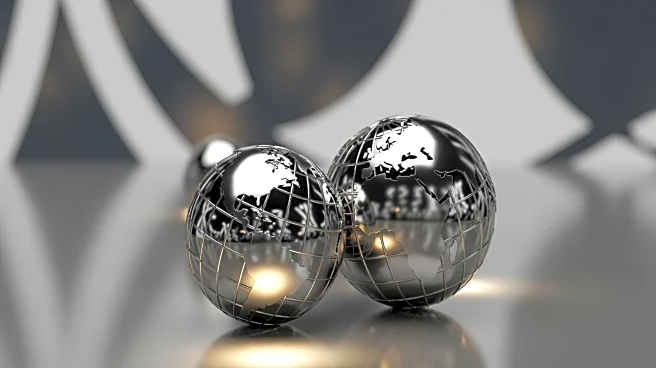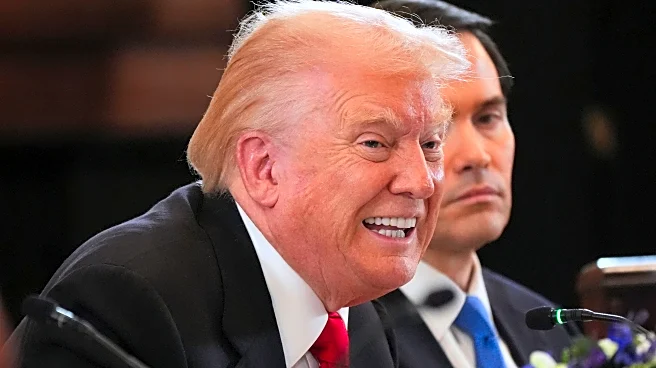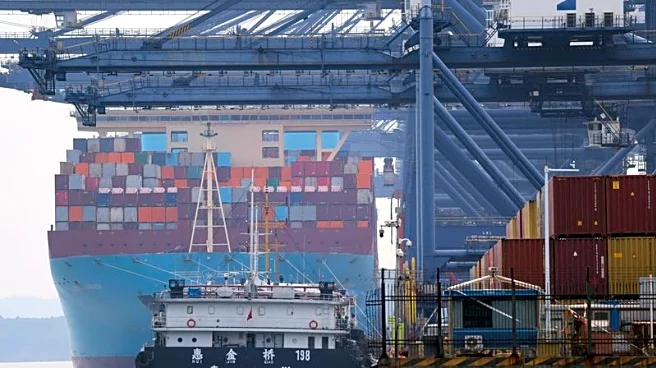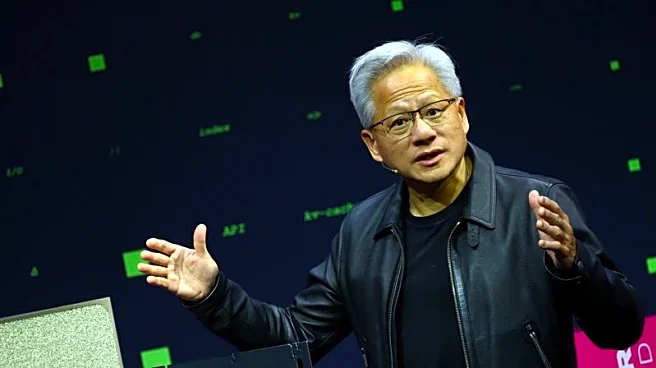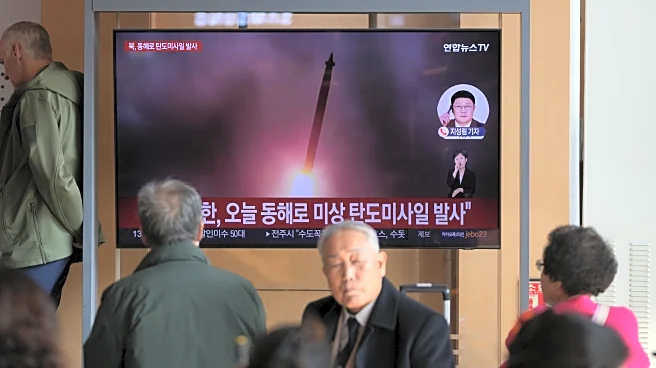What's Happening?
China's rare earth exports increased by 9% in October compared to September, marking the first rise after three consecutive months of decline. This development follows a meeting between President Trump and Chinese President Xi Jinping in Busan, South
Korea, where they agreed to keep rare earth exports from China flowing. Subsequently, China announced a pause on the October 9 export controls for a year, although restrictions from April remain in place. These controls had previously led to shortages in global auto supply chains. For the year-to-date period, China's rare earth exports totaled 52,699.2 tons, reflecting a 10.5% increase from the previous year.
Why It's Important?
The agreement between President Trump and Xi Jinping to maintain the flow of rare earth exports is significant for global industries reliant on these materials, particularly the automotive and technology sectors. Rare earth elements are crucial for manufacturing various high-tech products, including electric vehicles and smartphones. The pause in export controls may alleviate supply chain disruptions and stabilize market conditions. However, the continuation of April's restrictions suggests ongoing challenges for industries dependent on specific rare earth elements and refining technologies. This development underscores the geopolitical importance of rare earths and the strategic negotiations required to ensure their availability.
What's Next?
The temporary pause in export controls is set for a year, during which industries may experience some relief from supply chain constraints. However, stakeholders will closely monitor the situation, as the continuation of April's restrictions could still impact specific sectors. The upcoming detailed breakdown of export data on November 20 will provide further insights into which products and countries are most affected. Additionally, ongoing diplomatic engagements between the U.S. and China may influence future trade policies and agreements regarding rare earth exports.
Beyond the Headlines
The rare earth export agreement highlights the complex interplay between international diplomacy and global supply chains. It raises questions about the long-term sustainability of relying on a single country for critical materials and the potential need for diversification of supply sources. Furthermore, the situation may prompt discussions on the ethical and environmental implications of rare earth mining and refining, as countries seek to balance economic interests with responsible resource management.
